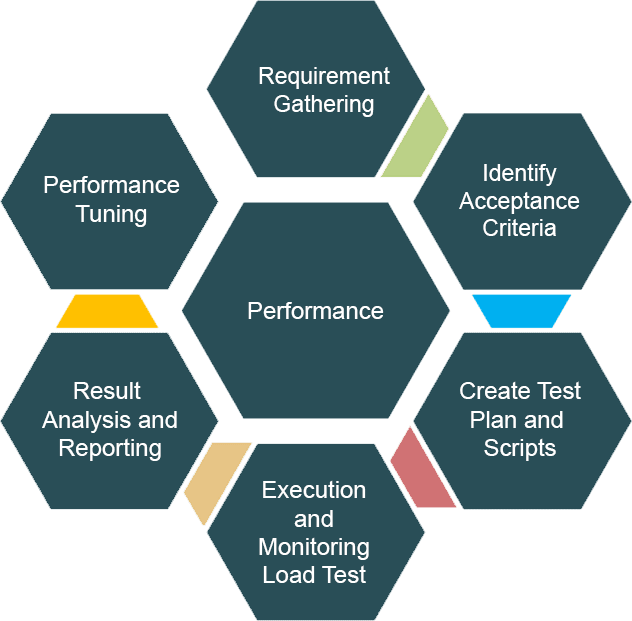Performance testing plays a key role in the development life cycle of the software.An app needs to undergo this non-functional testing to ensure its stability, reliability and seamless performance under different workloads and network conditions. Along with testing the system under a variety of individual and multiple networks and load conditions, Performance testing services also keep a tab on the time taken for the software to respond to these different loads.
The software has to undergo 12 different processes before QA experts can certify the software as bug-free. They include:
1. Existing environment analysis
2. Gathering current system performance testing
3. Defining load distribution and usage model
4. Performance acceptance criteria specification
5. Developing test assets, plan, scripts and scenario
6. Configuring the environment for load generation
7. Executing planned tests
8. Monitoring the performance counters of the web, application and database servers
9. Correlating and analysing the results
10. Generating reports
11. Providing recommendations for performance improvement
12. Retesting as required
Certain challenges faced during performance testing include:
• Wrong testing tool selection
• Lack of planning in testing strategy and its coverage
• Constraints of time and budget
• Lack of performance testing knowledge
• Improper analysis of outcomes
• Production environment testing can be difficult to conduct
The time to market has decreased considerably today. The need to develop and deliver superlative software within the shortest possible time has now become a norm. To ensure software stability and result consistency software testing should start with its development.
The software market is driven by a need for the software to load automatically and provide users with a great online journey. Making the software undergo load testing services helps QA analysts determine app behaviour and check its response time especially under heavy user load.
Ways to improve performance testing
Performance testing of software can be further improved by:
• Mixing functional testing for real clients: The aim of testing is to ensure a superlative end-user experience. This process starts with the end-user visiting the website, clicking on the action buttons to continue with a request, the server’s response time and rendering the response to the end-user.
While load testing is designed to create mass load on the server following the required protocols, the client’s experience is generally neglected. Understanding what a customer goes through during the virtual journey, gives a real measure of end-user experience. This needs to be incorporated in performance testing.
A holistic testing, wherein both the server response and the end-customer experience are evaluated, can be easily done by incorporating a functional test script,like the Selenium automation test script, into performance testing.
• Integrating mobile testing:Testing mobile app user experience is another area that needs immediate attention. To incorporate this within the tests, performance testing services should:
o Make use of different mobile devices
o Test the app performance in various networks
o Analyse the combined statistics of real mobile device user experience and load testing backend servers
o Incorporate performance testing on real mobile devices within the load testing script
Such a scenario would enable testers to gather front-end measurements during ongoing load testing. Testers will gain a clearer idea of the response time of individual transactions done from the mobile with the server and vice-versa.
oad testing helps to uncover bugs, errors and other app-related issues and identify its general location. However, for some critical performance issues, testers have to opt for deeper root cause analysis to analyse and fix the cause of a slower server response.
Using a combination of a load testing tool and an APM or application performance monitoring tool helps to quicken the process by opening up interrelationships between all components like the application server, database server, web server, cloud services etc. The presence of bottlenecks can be easily detected and problematic calls identified even if there are present in stack trace levels.
Statistics show that this combination cuts down testing time by 75%.
• Integrating DevOps processes:Agile development trends and the need for faster software deployment also make it necessary for testers to incorporate the testing of software delivery methods. When multiple teams like research and development, DevOps, QA etc., work in tandem and frequently share real-time data, teams can reach performance goals faster.
Companies that have already incorporated DevOps in their load testing services have shown an 8x increase in production deployment. They are fixing app issues 12x times faster and have a 2x times higher success rate.
• Extending the scope of analysis:Since test data is viewed and presented in many different ways, the reporting and analysis requirement of each test is unique. There is a need to enhance these capabilities by exporting test data and enabling its manipulation, dicing and slicing using external Performace Testing tools.
Adopting the above methods will help enhance the output of performance testing. Software deployed will show better adaptability to the client internal architecture and ensure consistent performance.
